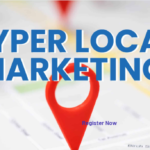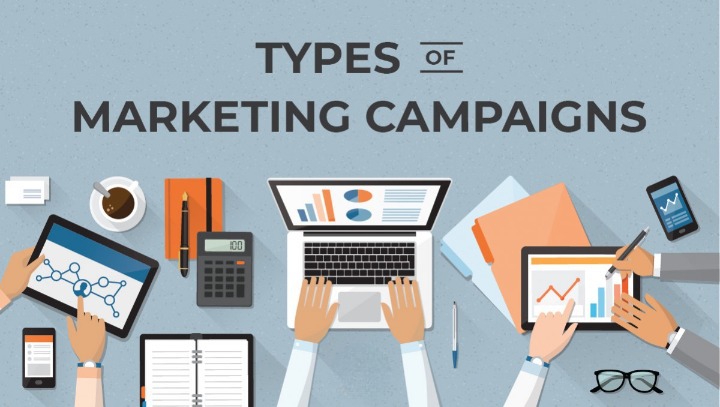What Is a Marketing Campaign?
A marketing campaign is a collection of strategies designed to accomplish a specific marketing objective for an individual, brand or company. These campaigns are crafted to garner the attention of prospects and customers through various mediums, such as:
- Social media
- Television
- Email marketing
- Print advertising
- Radio
- Pay-per-click
Advertising isn’t the only way to conduct marketing campaigns. Video conferencing, demonstrations and other interactive methods can also enter into the picture when it comes to accomplishing the intended result:
Increase overall awareness about a company and attract new prospects and customers.
Specific goals that might exist inside the various types of marketing campaigns at your disposal include:
- Reducing negative publicity
- Building a brand image
- Introducing a new product
- Increasing affiliate sales
- Rebranding a company
- Revamping an existing product or service
Types Of Marketing Campaigns
- Acquisition Marketing Campaign
- Product Marketing Campaign
- Social Media Campaign
- Paid Advertising Campaign
- Content Marketing Campaign
- Email Marketing Campaign
- User-Generated Content Campaign
You’ll come across various other kinds of marketing campaigns, such as direct mail campaigns, marketing research campaigns, community building campaigns or event registration campaigns.
However, some campaigns can be consolidated underneath larger marketing campaigns. Aspects of a direct mail marketing campaign might fit under the umbrella of an acquisition marketing campaign or brand development campaign, for example.
What follows are strategies for building out the most commonly-used types of marketing campaigns.
Examples are included for most of the campaigns as well, in order to help you understand how to choose and apply the campaigns most needed inside your business.
1. Acquisition Marketing Campaign
A customer acquisition campaign is one that not only raises awareness about your brand’s solutions, but also results in acquiring new email subscribers and customers.
It’s important to note that many other types of marketing campaigns fall under the category of “customer acquisition”.
Customer acquisition isn’t one simple funnel setup or just one campaign. Instead, it’s a continuous process that uses different marketing campaigns to accomplish the goals of more leads and sales.
Acquisition campaigns are top of the funnel marketing strategies and include:
- Brand awareness
- Lead generation
- Social media
2. Product Marketing Campaign
A product marketing campaign needs to take four areas into consideration:
- Product
- Marketing
- Customer success
- Sales
At first glance, you might be tempted to think that a successful product marketing campaign is simply launching and benefiting when the sales roll in.
It’s more effective to think strategically about where clarity is needed both before and after a product marketing campaign begins.
After a launch, you need to focus on whether initial sales number goals were met and how to continue driving ongoing demand for the product.
Put more simply, a product marketing campaign consists of three main components:
- Messaging and positioning
- Making sure customers understand the product’s value during launch
- Driving continuous product demand and usage
The campaign starts to take shape when the product’s messaging and positioning becomes clear. This knowledge dictates assets such as sales page copy, webinar content, and email marketing communication for the campaign.
Feedback from customers helps to refine the process so that the marketing team knows whether messaging is hitting home correctly.
Better Proposals has some great templates that could help you get your sales driven campaign right. Ultimately, meeting sales goals or not dictates the types of adjustments or new tests that must be done throughout the ongoing sales process.
3. Social Media Marketing Campaign
A successful social media campaign consists of four important parts:
- Well-developed plan
- Defined goals
- Cross-channel promotion
- Final analysis
Craft your plan: Start by analyzing your existing social media accounts and followers. Get your team in place and assign roles so that promotion, design and messaging responsibilities don’t overlap during the campaign. Set your budget.
Set clearly-defined goals: Consider the following goals during a social media marketing campaign.
- Increase brand awareness when you need to set yourself apart from competitors or if the business is relatively new. Use a sharing campaign and measure metrics like influencer mentions, follower numbers, retweets and app downloads generated by social media.
- Increase website traffic by driving social media followers to website landing pages. Pay attention to metrics like time on site, visits from social sites and total website visits.
- Improve conversion rates via web forms where social followers sign up for discount offers or newsletter lists. Track metrics such as assisted social conversions, total site entries and total conversions.
Cross-channel promotion: Use a multi-channel approach so that your prospects get reminded about offers via platforms such as website retargeting ads, text messaging and email marketing.
Analyze the results: This is more easily done if you carefully selected your goals in step #2 above. Evaluate how well the social media campaign performed in terms of engagement metrics, customer lifetime value and new sales numbers.
4. Paid Advertising Campaign
Use one or all of these four paid advertising campaign types:
- Paid search marketing: This is a strategy where image and text ads are used on platforms like Bing and Google. Also called SEM (search engine marketing).
- Display marketing: This makes use of display networks that deliver ads to website visitors and is similar to SEM. Use retargeting technology to serve ads based on website browsing activity.
- Paid social media marketing: Based on interactions and interests, target social media users with image and video ads.
- Influencer marketing: Use influencer relationships to promote your products more personally through people with large existing social followings.
Consider using Google Ads when using this type of marketing plan. Follow Google’s guidelines to improve your quality score. Use A/B testing on ad copy in order to improve ad rankings and decrease average bid costs.
Pay attention to geographic metrics to change bids based which locations deliver your campaign the best conversion rates. Use Google Analytics information to find website landing pages that benefit visitors but aren’t performing well organically and then use a paid advertising campaign to boost traffic.
5. Content Marketing Campaign
A content marketing campaign differs from a content marketing strategy, which you should already have running. Use a campaign over a period of 30 to 90 days and keep it focused on a specific audience or topic.
Set definite goals and decide whether you want to generate leads, raise brand awareness, generate additional social media engagement or make a blog post go viral.
Your content marketing strategy should have produced specific buyer personas. Develop content ideas based on the content marketing campaign’s topic and your buyer personal information.
The next step is to identify assets and plot your campaign across a content calendar. Consider using assets such as:
- Whitepapers
- Videos
- Blog posts
- eBooks
- Online courses
- Landing pages
- Social media posts
- Infographics
Fill up the content calendar so that your team understands when each content asset will go out during the campaign.
Now it’s time to identify keywords based on relevance, competition and volume. Choose keywords that make it easy to create helpful, informative and worthwhile content around your chosen campaign topic.
Your last step is distribution, where you plan out delivering content via:
- Social media
- Your website
If you’re able to correctly implement a content marketing campaign, the sky’s the limit. Not only will your brand get more exposure, but internal assets like your blog will generate more profit in the long run.
6. Email Marketing Campaign
You can’t operate a successful email campaign without clearly-defined objectives. Here are some ideas to help set your goals:
- Improve welcome sequence in order to educate leads about your value
- Promote content engagement, such as raising awareness about a new webinar
- Nurture subscribers more effectively
- Re-engage inactive subscribers
- Segment subscribers so that you can deliver more relevant content
Create effective lead magnets and opt-in landing pages when you’re starting a new subscriber campaign. Brainstorm the best ways to create lead magnets for your audience, such as creating short videos, cheatsheets, whitepapers, quizzes, giveaways, or eBooks.
Use different strategies to capture new subscribers, such as blog post content upgrades, homepage lead magnets, lightbox popups and exit intent popups.
Effective email marketing campaigns require a well thought out approach to the frequency of your email sends. For example, you might use a once per day frequency over the first week with your welcome email campaign so that new subscribers get used to receiving communication.
Your nurture newsletter sequence, however, might only run weekly, biweekly or monthly.
Lastly, take time to wisely craft your:
- Subject lines
- Email copy
- Calls-to-action (CTAs)
Pay close attention to your CTAs. Make sure they closely match your overall objectives for the campaign.
7. User-Generated Content Campaign
User-generated content consists of blog and social media posts that your customers use to share their love for your brand and products. The power of user-generated content is obvious:
- They’re directly telling their friends and family that they need to check out your brand
- Your audience is creating content for you
Start your user-generated content campaign by deciding on a platform. Twitter, Instagram and Facebook all work well.
Using a unique hashtag is critical when employing these types of marketing campaigns. It will help when it’s time to find and aggregate all the content that the campaign generates for your business.
Create your call-to-action and keep it simple. For example, a make-up brand might use this: “Show us your favorite color on Twitter with #mylipstickfavs.” The most important part to running a successful user-generated content campaign is to respond to and engage with your audience when they participate. This process shows your customers that the campaign is just as important to you as it is to them. The more you engage, the more the campaign will take off.





